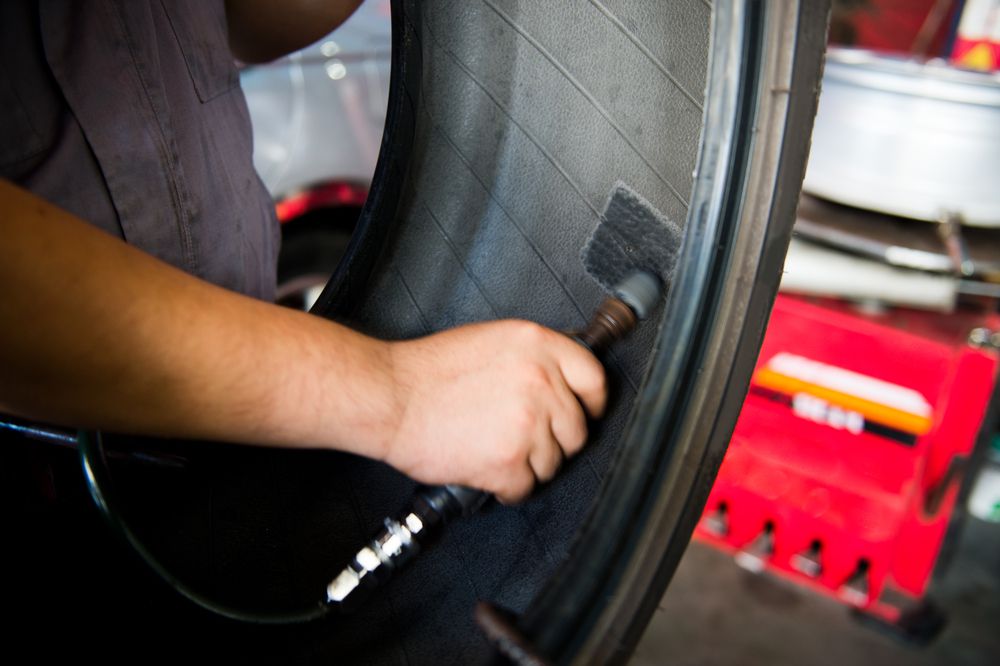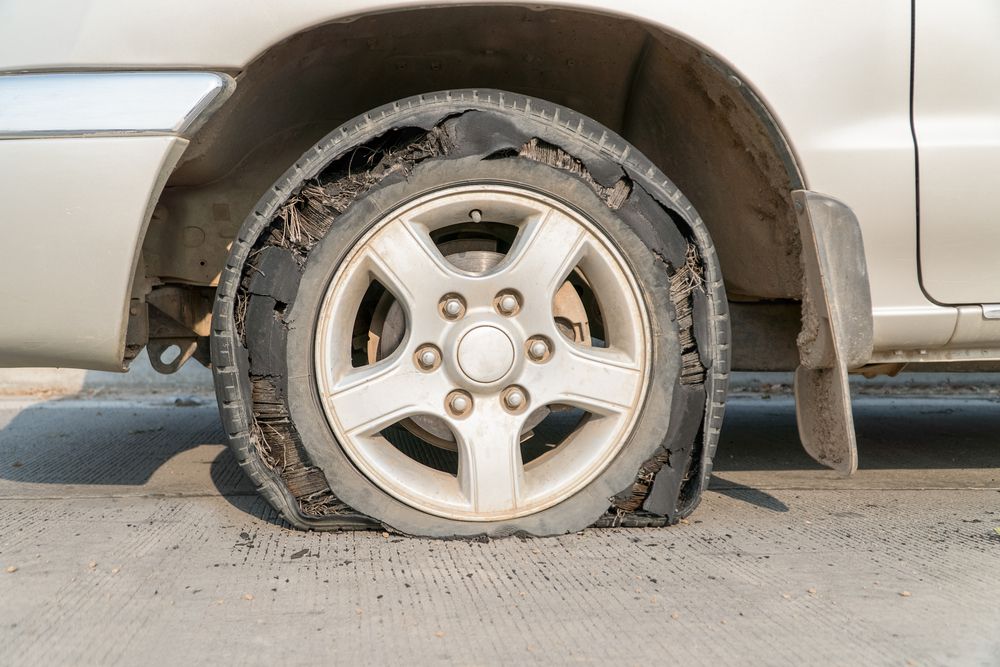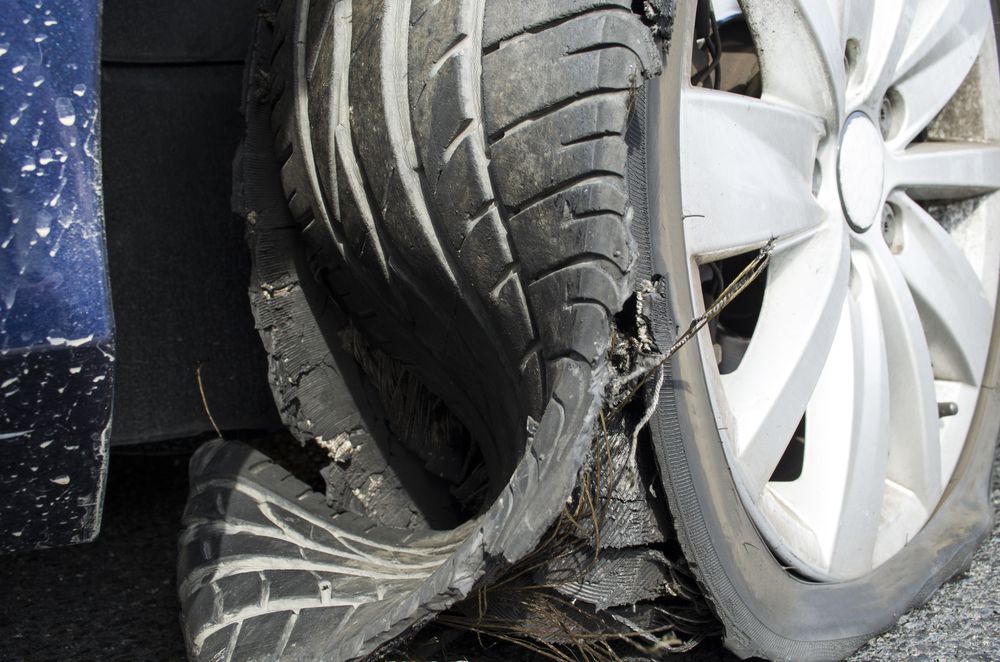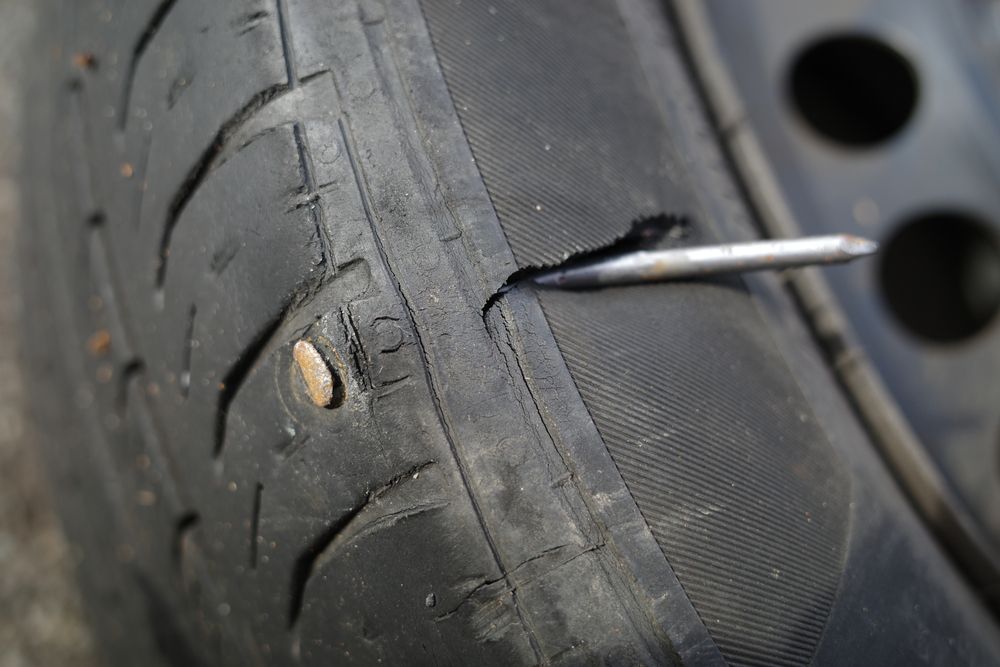A tire patch is a safe and reliable way to repair a leaky or flat tire to
avoid the expense of replacing the tire, but how many patches can a tire
have?
A tire can safely have multiple patches depending on where the tire is
punctured. Any two punctures should be at least 16 inches apart, and
generally speaking, you should only patch a tire twice; however, you
should take a tire to a tire professional to confirm.
Today, we'll teach you about the risks of patching a tire too often, how
long these patches last, and when you should avoid a patch.
Keep reading as we cover the above topics and share details.
 A mechanic applying a tire patch.
A mechanic applying a tire patch.
How Many Times Can I Patch My Tire?
A properly patched puncture won't lessen a tire's lifespan.
Theoretically, you could patch the same tire as many times as you like as
long as any two punctures aren't less than 16 inches apart.
That said, after the 2nd or 3rd patch, many tire repair centers refuse to
make the repair and will instead suggest a new tire.
In any case, it's best to have a professional tire specialist look at your
tire and take their advice.
What Are The Risks of Patching More Than Once?
Tires that have been properly patched more than once aren't inherently more
unsafe than tires that have only been patched once.
That said, tires that have been improperly patched, regardless of how many
times, have many risks.
An improperly patched tire will leak, which could lead to the following:
- The potential for your tire to blow out and cause you to lose control of
the vehicle
-
Possibility of a car wreck
-
Damage to the car's wheel or rim as a result of a blowout
-
A negative effect on the vehicle's speed rating
 An improperly patched tire can blowout.
An improperly patched tire can blowout.
How Long Does A Patched Tire Last?
Tire patches can be incredibly reliable if installed correctly and will
last the tire's lifetime.
It all depends on how well you maintain your vehicle and its tires/wheels,
including:
-
Regular tire rotations
-
Air pressure maintenance
-
Regular wheel alignments
-
Maintenance balancing
A patch can also be affected by everyday things we encounter driving,
including road hazards, nails, potholes, etc.
Are Patched Tires Safe?
Patched tires are safe; after all, even tire repair centers and mechanics
will do the patch repair willingly.
And when it comes to a safe option that doesn't require dropping a few
hundred bucks on a new tire, this is the best choice.
It's especially safe compared to driving on a leaky or flat tire, and you
can even count on them in most driving conditions.
Of course, road hazards can compromise the safety of a patched tire if the
patch job isn't done correctly.
However, having a professional tire specialist patch your tire is worth it
since the job is relatively affordable (about $15-$30 ).
 An improperly patched tire can blowout.
An improperly patched tire can blowout.
Does Patching A Tire Weaken It?
Patching a tire will not inherently weaken it, but an improperly patched
one will be weak and inevitably start to leak.
A tire's sidewall should never be patched. Due to stresses on the sidewall,
a patched sidewall will not hold and could lead to a dangerous situation.
Depending on what part of the tire you're patching, it could become weaker
or more damaged after being patched.
The vehicle speed rating is the main thing a tire compromises with a good
patch. After even the most successful patch, a tire isn't recommended for
high-speed use (more than 80-85 mph).
Can You Drive On The Highway With A Patched Tire?
Fortunately, patches are reliable even on highway roads, although their
price tags may indicate otherwise.
While a patch may lower the speed rating of your car, you can still drive
at somewhat high speeds (70-75 mph), which is the limit on most highways.
Just make sure not to exceed the limit, especially if the road is
particularly bumpy or hazardous.
What Size Hole Is Too Big To Patch?
While tire patches are incredibly helpful, there are some scenarios where
they just can't be used.
Holes or punctures that are:
-
Larger than ¼ inch in any direction
-
On tires that have minimal tread left (2/32 inch or less)
Some people will attempt to patch and repair tires with holes larger than ¼
inch at home.
Unfortunately, tires are not built to handle this kind of repair, and you
risk a blowout or, worse, driving in those conditions.
 Punctured sidewalls cannot be patched.
Punctured sidewalls cannot be patched.
How Many Holes Can You Patch In A Tire?
As previously mentioned, you shouldn't be patching the same hole more than
once or twice in the tire's lifespan.
And when it comes to multiple different holes, you should limit those patch
repairs to just two maximum.
You can still use two patches if the two holes are more than 16 inches
apart.
The problem is that this is more often than not simply not the case, and
you'll end up needing to get the tire replaced.
Conclusion
Patching a tire puncture is a safe and useful way to give a temporary fix
to a tire problem. But how many patches can a tire have?
Generally, you shouldn't patch the same tire puncture more than twice and
shouldn't patch more than two holes in a tire (especially if they're close
together).
That said, take your tire to the tire shop and get a final decision from a
professional before throwing away a tire with more than two punctures.